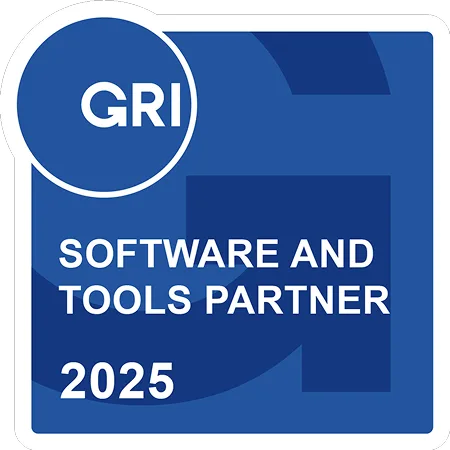Understanding the Carbon Footprint: Why It Matters
The term carbon footprint pops up everywhere—from corporate reports to everyday conversations about climate change. But what does it really mean? In essence, a carbon footprint measures the total greenhouse gas (GHG) emissions directly and indirectly caused by an individual, organization, product, or activity. It’s a universally recognized metric for environmental impact, typically expressed in CO₂ equivalents (CO₂e).
Why care? Because calculating your carbon footprint is the first step toward understanding and reducing your impact on the planet. For professionals, especially those in sustainability, operations, or compliance, knowing your footprint is now a business imperative. Investors, regulators, and customers are asking tough questions, and the answers start here.
Carbon Accounting: The Framework Behind the Numbers
If a carbon footprint is the final tally, carbon accounting is the system that gets you there. Think of it as the structured process of identifying, quantifying, and reporting GHG emissions across an organization or supply chain. This often involves following recognized standards, such as the GHG Protocol or ISO 14064, to ensure accuracy and comparability.
In practice:
- Carbon accounting tracks and documents emissions sources (energy use, transport, purchased goods, etc.).
- It covers all relevant greenhouse gases, not just carbon dioxide.
- Data is often collected for regulatory compliance, voluntary reporting, or to inform strategy and risk management.
Example: A multinational retailer like Walmart uses carbon accounting to measure emissions across its stores, distribution centers, and suppliers, enabling it to set science-based targets and publicly report progress.
Emissions Inventory vs Footprint: A Key Distinction
When exploring the world of GHG measurement, you’ll encounter terms like emissions inventory and footprint. They sound similar, but there are subtle differences that matter—especially if you’re benchmarking, setting targets, or preparing disclosures.
Emissions Inventory
An emissions inventory is a comprehensive, itemized list of all the GHG emissions sources within a defined boundary—be it a company, city, or nation. It’s a granular dataset, often used for regulatory or voluntary reporting.
- Purpose: To provide a detailed breakdown of emissions sources.
- Scope: Can include direct (Scope 1), indirect (Scope 2), and value chain (Scope 3) emissions.
- Usage: Supports compliance with frameworks like CDP, TCFD, or national inventories for UNFCCC reporting.
Carbon Footprint
A carbon footprint is typically a summarized figure—a headline number representing total emissions over a period. It distills the inventory into a single, digestible metric for communication, benchmarking, and goal-setting.
- Purpose: To communicate overall impact and progress.
- Scope: Can be organizational, product-level, project-level, or even personal.
- Usage: Used in sustainability reports, marketing, and external communications.
Why the Difference Matters: Strategic Implications
For sustainability professionals, recognizing the difference between carbon accounting and carbon footprinting isn’t just semantics—it shapes your entire approach.
- Decision-making: Carbon accounting provides the granularity needed for targeted abatement, while the carbon footprint offers a big-picture view for strategy and storytelling.
- Reporting: Regulatory frameworks often require detailed inventories, but stakeholders like investors or customers may only look at your headline footprint.
- Goal-setting: Science-based targets rely on accurate inventories, but progress is often tracked via footprint reductions.
Pro tip: Don’t rely on a single carbon footprint number to drive action. Use your emissions inventory to identify hotspots, set meaningful targets, and track interventions in detail.
How to Build a Robust Carbon Management Strategy
Building a credible sustainability program means leveraging both carbon accounting and carbon footprinting. Here’s how to do it right:
1. Start with the Inventory
- Map all operations, assets, and activities.
- Gather data on energy, materials, transport, waste, and other emissions sources.
- Follow recognized standards (e.g., GHG Protocol, ISO 14064).
2. Calculate Your Carbon Footprint
- Aggregate your emissions inventory into a headline carbon footprint.
- Express results in CO₂e for comparability.
- Disclose boundaries and methodologies for transparency.
3. Analyze, Reduce, Report
- Use inventory data to spot emissions hotspots.
- Implement reduction initiatives (energy efficiency, renewables, supply chain engagement).
- Track progress with updated footprints and inventories.
- Report performance to internal and external stakeholders.
Master Both for Maximum Impact
In summary, carbon accounting is the rigorous process of measuring and documenting emissions, while a carbon footprint is the big-picture metric that communicates your impact. Both are crucial. Understanding the nuances between emissions inventory vs footprint can elevate your sustainability strategy, improve reporting, and drive real-world results.
Ready to Take Action?
See how Sprih equips organizations to measure, manage, and cut their carbon footprint with clarity, precision, and AI that actually delivers.
FAQs
What is a carbon footprint?
A carbon footprint is the total amount of greenhouse gas emissions caused directly or indirectly by an individual, organization, product, or activity. It’s expressed in CO₂ equivalents (CO₂e) and provides a high-level picture of environmental impact.
How is a carbon footprint different from an emissions inventory?
An emissions inventory is a detailed, source-by-source list of all GHG emissions within a defined boundary. A carbon footprint is a summarized total of those emissions. Inventories support regulatory reporting; footprints are used for communication and benchmarking.
What is carbon accounting?
Carbon accounting is the structured process of identifying, quantifying, and reporting greenhouse gas emissions. It follows standards like the GHG Protocol or ISO 14064 and is the data foundation behind your carbon footprint.
Why do companies need carbon accounting?
Companies use carbon accounting to comply with regulations, meet investor expectations, set science-based targets, track reductions, and understand risks in their operations and supply chains. Accurate accounting enables credible sustainability strategies.
Which greenhouse gases are included?
Carbon accounting covers all major greenhouse gases listed under the GHG Protocol: CO₂, CH₄, N₂O, HFCs, PFCs, SF₆, and NF₃. These are converted into CO₂e to ensure comparability across different types of emissions.
What are Scopes 1, 2, and 3?
Scope 1 covers direct emissions from owned or controlled sources. Scope 2 covers indirect emissions from purchased energy. Scope 3 includes all other value chain emissions—often the largest category for most companies.
Why does the distinction between inventory and footprint matter?
Inventories help identify emission hotspots and guide targeted reduction efforts. Footprints communicate overall impact and progress. Both are needed: granular data for action, and a headline metric for reporting and accountability.
How do companies calculate their carbon footprint?
They collect activity data (e.g., energy use, transport, materials), apply emissions factors, convert results to CO₂e, and aggregate everything into a total footprint. The process typically follows GHG Protocol methodologies for transparency and consistency.
How often should a carbon footprint be updated?
Most organizations calculate and publish their carbon footprint annually. High-impact sectors or companies with regulatory obligations may calculate more frequently for internal management and tracking.
How can businesses reduce their carbon footprint?
Start with the emissions inventory to pinpoint hotspots. Common strategies include energy efficiency, renewable energy adoption, supplier engagement, low-carbon procurement, and operational redesign. Continuous measurement is key to tracking progress.
Where does technology like Sprih come in?
Platforms like Sprih automate emissions data collection, streamline carbon accounting, and generate accurate footprints in minutes. They help companies move beyond spreadsheets, identify reduction pathways, and produce audit-ready reports with ease.














